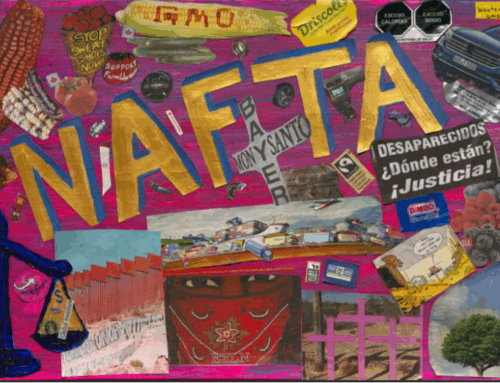
Figure 1. Francis Perkins Building, U.S. Department of Labor. Photo by author.
In the three decades following the enactment of the North American Free Trade Agreement (NAFTA), the public consensus around trade and labor looks much different than it did in 1994. Where the Washington Consensus once promoted a discourse promising the lifting of all boats through lower trade barriers, beginning in the Obama administration—and continuing into the Trump and Biden administrations—the idea emerged that free (and fair) trade required the promotion of international labor rights. Enforcement of those rights through the levers of trade (export controls, tariffs, and the like) became a matter of protecting American jobs from outsourcing and leveling the field of supply-chain organization and firm competition (Lighthizer 2023). The Trump administration made this case most vociferously, insisting that American companies had been lured to other countries promising weak labor rights and a business-friendly environment. To correct this imbalance, governments needed to align their labor laws with international labor rights standards so that their workers and businesses could compete fairly against their American counterparts.
For members of the two unions I studied in Playa del Carmen, listening to Trump make this claim in 2018 seemed strange from their perspective. Even before the most recent slate of reforms to Mexican labor law, the rights possessed by Mexican workers—at least when properly enforced—offered far more protections than those available to workers in the United States. Some had learned this truth the hard way during their own immigration experiences in the United States. It was easy enough to find work, yet when it came to worker rights, most of my interlocutors believed both countries were in need of reform. Why, then, was the focus only on Mexico?
While this question surfaced in public debates in the Mexican media, in the United States it was left unasked. Instead, the focus of trade negotiators and members of Congress remained firmly on Mexico. The labor provisions ultimately incorporated into the United States-Mexico-Canada Agreement (USMCA) were, on the one hand, far reaching in comparison with the other multiparty trade agreements, and on the other, distinctly unequal and lopsided. The treaty’s Labor Chapter (Chapter 23) and Rapid Response Mechanism apply almost exclusively to workers in Mexico. Only Mexico, moreover, was required to undertake a significant overhaul of its labor laws and enforcement institutions. While the scope and likely effects of these reforms remain a matter of debate among legal and labor scholars (Foust Rodriguez et al. 2022), there was nevertheless broad consensus among many sectors of the Mexican public that reform was necessary and overdue (Bensusán 2016; Cook 2010).
What is striking, however, is that a similar consensus regarding the need for domestic labor law reform existed in the United States in the years leading up the USMCA’s renegotiation, particularly among the country’s key labor leaders, scholars, and organizers (Andrias 2016; Burns 2022; McAlevey 2016). Since the Truman administration, scholars of U.S. labor law have documented the steady weakening of the National Labor Relations Act (NLRA) at the hands of both Republican and Democratic administrations, as well as through rulings issues by the conservative Supreme Court (Andrias 2016). And yet, during USMCA negotiations, both the U.S. government and American labor organizations promoted narratives that cast Mexico as the only country in urgent need of reform, and Mexican workers as the only victims of inept and unrepresentative unions within the trade zone (Bensusán and Middlebrook 2020; Tula 2019; Feingold 2019).
This outcome, I argue, reflects both the sense of exceptionalism that continues to shape the thinking of the American international labor rights community (and U.S. human rights foreign policy more broadly), and the weak position of American labor organizations and progressive civil society in advancing meaningful labor law reform at home.
The myth of American exceptionalism is foundational to the country’s national identity. While this kind of distinctiveness is not exclusive to the United States, it has served as an animating force in American political life. Throughout the country’s history, political, social, and business leaders have drawn upon a narrative of exceptionalism to justify interventions abroad, as well as to galvanize public support for protections against real or imagined interventions from outsiders (Grandin 2019). Mexico has figured prominently in this history, often functioning as the United States’ exceptional foil—exceptionally lawless, exceptionally corrupt, exceptionally dangerous, and so on.
In the context of the USMCA renegotiations, the maintenance of this exceptionalism created an opening for greater international labor rights promotion in the name of correcting trade imbalances, yet it did so at the cost of concealing the dire situation faced by American labor unions—and the need for international intervention on their behalf—in the face of domestic political impasse.
Free Trade Isn’t Free
When NAFTA came into force, it marked a tremendous defeat for labor unions in the manufacturing sectors across the newly formed trade bloc. In the decades prior to the signing of the agreement, organized labor in Mexico, Canada, and the United States experienced varying levels of decline as the post-World War era of national industrialization gave way to the rise of global neoliberalism. From the 1940s to the 1960s, industrial employment figured into American and Mexican development schemes that promoted the payment of a family wage to a single (male) breadwinner in exchange for industrial peace (Fernandez-Kelly 1983). Declining firm profits and mounting national debt placed strains on this arrangement and led to growing inflation into the 1970s (Weiss 1999; Chaikin 1981).
When the U.S. Federal Reserve dramatically raised interest rates in 1979 and 1980 to bring inflation down, demand in the United States sharply declined, including the demand for Mexican oil. As a result, the value of the peso fell precipitously, triggering a debt crisis that ended the period of state protectionism and industrial policy in Mexico while simultaneously accelerating deindustrialization and outsourcing in the United States (Barker 2019).
Instead of import-substitution industrialization, Mexico would pursue economic development through export-oriented manufacturing. This shift meant state incentives to attract foreign investment through tax breaks, land deals, and tacit agreements to repress organized labor. The notion of a family wage and stable employment were soon replaced by a minimum wage and precarious employment. Facing the competitive pressures of an increasingly global economy, employers implemented new production processes designed to maximize efficiency through flexible work arrangements. These new manufacturing processes were introduced and developed within the first “special economic zones” established along the U.S.-Mexico border. These zones would provide a legal model for the regional free trade agreement that the United States began negotiating with Canada and Mexico in the 1980s.
While labor leaders in the United States expressed their disdain for free trade, when it came time mount a successful resistance against NAFTA, unions found themselves too weak and disorganized to effectively mobilize. Popular media framed the signing of NAFTA as a triumph for free trade and economic development (Parenti 2002). A decade after its passage, a bipartisan consensus in the United States formed about the acceptable costs that workers and unions needed to bear in order to reap the benefits of free trade.
This commitment to frictionless trade would lead the U.S. government to support China’s ascension to the World Trade Organization in 2001, further accelerating a process of outsourcing that affected all three members of NAFTA and decimated the ranks of organized labor (see Bloom 2024; Charles 2022). Even with the rise of a growing counterpublic critical of international trade and globalization—and willing to engage in disruptive mass mobilizations such as in Seattle and Quebec—the legal architecture of free trade expanded. During the 2000s, the United States would sign the Central America-Dominican Republic Free Trade Agreement (CAFTA-DR), with the Dominican Republic, Costa Rica, Nicaragua, Guatemala, and Honduras, as well as several other bilateral agreements, the last one which was signed in 2007 with South Korea, just before the 2008 financial crisis (U.S. Customs and Border Protection). In total, the United States now maintains fourteen active free trade agreements with twenty countries.
NAFTA, of course, coincided with—and in some cases accelerated—the adoption of policies that encouraged flexible labor markets. Across the trade bloc, this meant legal changes allowing employers to hire temporary and subcontracted labor, thereby undermining unions and reducing the employment relationship to a simple matter of individual contract. Ethnographies of workplace authoritarianism in each of the NAFTA members abound and describe the union busting tactics wielded by employers to break worker organizations and worker solidarity, as well as the acts of collective resistance undertaken by workers and their allies (Plankey-Videla 2012; Fudge and MacPhail 2009; Allaston 2010). Stories of workers and communities experiencing the other side of structural adjustment and globalization would eventually evolve into a politics deeply skeptical of trade and eager to reform the agreement.
Trump’s political rise in 2015, and his successful campaign for president in 2016, drew upon a festering sense of betrayal that linked the social harms of economic liberalization to free trade. This sentiment was bolstered by an equally potent critique from the left, popularized by 2016 Democratic presidential nominee Bernie Sanders, who argued that the one percent were the only beneficiaries of free trade. Where Sanders placed the blame squarely on corporations and the “billionaire class,” Trump articulated the problem in nationalist terms, pointing the finger at China, Mexico, and other trade partners he claimed took advantage of the United States.
Soon after entering office, the Trump administration withdrew from the Comprehensive and Progressive Agreement for Trans-Pacific Partnership (CPTPP), an Obama-era initiative to develop an extensive free trade network in Asia and Latin America as an economic counterweight to a rising China. Later, in May of 2017, Trump notified Congress that the United States would initiate renegotiations of NAFTA under the Trade Promotion Authority (TPA).
The Labor Provisions in the USMCA
The renegotiation of NAFTA produced the United States-Mexico-Canada Agreement (USMCA). With respect to labor, the new trade pact included symbolic language committing the parties to uphold core labor standards while also calling for sweeping reform to Mexico’s domestic labor laws and introducing several trade-related enforcement mechanisms applying to certain “priority” industries, such as automotive, aerospace, and semiconductors (a complete list of priority sectors is included in Annex 31-A of the USMCA).
One example was the Labor Value Content (LVC) rule, which requires that 40 – 45 percent of an automobile’s parts be made by workers earning at least sixteen U.S. dollars per hour. Another was the Rapid Response Mechanism (RRM), a legal instrument allowing workers in priority industries engaged in cross-border trade to report violations of their rights to another member state’s oversight authority. If a report is deemed credible, authorities can initiate investigations, determine whether a violation occurred, and suspend preferential tariff treatment against non-compliant actors (Claussen 2024).
Unsurprisingly, the RRM applies only to Mexico and Canada, though in practice, the majority of complaints have been made against facilities in Mexico (Claussen 2024). The United States is not subject to the RRM, a reflection of the Trump administration’s effort to frame the treaty’s renegotiation as a matter of leveling the playing field against Mexico and Canada. According to the administration, American companies left the United States because of the weak labor laws and low wages abroad; therefore, by raising standards and salaries in Mexico, employers would be discouraged from outsourcing and might even bring some production to the U.S.
Democrats joined in this framing, pointing to a long record of human and labor rights reporting that described the difficult working conditions, active union suppression, and widespread union-employer collusion in Mexico’s export manufacturing sector. Following negotiations, the agreement was strategically signed in November of 2018, just before Andres Manuel Lopez Obrador’s inauguration, due to concerns among the business community that he might seek more progressive reforms. When Democrats regained control of the House in 2018, they reopened the negotiations in 2019 and successfully lobbied Mexico to agree to more extensive domestic labor rights reform.
While the Mexican government raised concerns about sovereignty when negotiating the terms of labor law reform with the United States, the election of López Obrador for President—and the majority held by MORENA in Congress—meant that the political conditions existed for progressive reform. Labor scholars and advocates on the left and center-left had spent decades pushing for changes to the labor code that would create the conditions for a robust and independent unionism capable of replacing the increasingly defunct corporatist unions of the mid-twentieth century dictablanda period (Gillingham and Smith 2014). Some of these advocates served on López Obrador’s trade negotiation team, while others took roles inside the administration and helped craft a number of domestic policies geared towards benefiting the Mexican working-class. These efforts aligned with the wider spirit of the López Obrador campaign, which—in a sort of mirror image to Trump’s—sought to right the wrongs generated by Mexico’s elite-driven pursuit of free trade and global integration at the expense of the country’s industrial working-class. Yet, where López Obrador’s administration focused on redistribution policies and strengthening worker rights, Trump’s only significant legislative achievement in his first term was a tax cut for wealthy Americans and businesses (Hunter-Pazzara 2022).
The necessity of labor law reform in Mexico, however, did not necessarily diminish the need for labor law reform in the United States. Despite Trump’s narrative of a lopsided playing field, the declining economic position of the American manufacturing worker preceded NAFTA by several decades. Its roots can be traced to a long campaign initiated by American conservatives to correct what they believed were the mistakes of the New Deal era and the passage of the National Labor Relations Act (NLRA) in 1935. They achieved their first major victory when, over Truman’s veto, Congress enacted the pro-business Taft-Hartley amendments to the NLRA in 1947. Since that defeat, organized labor in the United States has faced a series of setbacks, aided by a long line of Supreme Court decisions that made it harder to organize a union, negotiate a collective bargaining agreement, or prevent an employer from engaging in capital strikes and retaliatory outsourcing (Andrias 2016).
The height of the free trade era the United States also coincided with significant manufacturing outsourcing to the American South, which in 2023 accounted for half of all manufacturing employment nationwide (Benzow and O’Brien 2024; U.S. Bureau of Labor Statistics, 2021). Attracted by a combination of federal grants, tax breaks, right-to-work laws, weaker employment protections, and an entrenched, racialized system of labor union repression, many employers transformed well-paid jobs in the “Rust Belt” into poorly paid, dead-end jobs with few opportunities for advancement in the “Sun Belt.”
By the time Trump announced his intention to renegotiate NAFTA in 2017 “on behalf of the American worker,” private-sector union density in the United States was at 6 percent (down from its high of 35 percent in 1954)––a figure that remains unchanged nearly four years after the USMCA took effect in 2020. In fact, since 2017, further erosions to American labor law have occurred, including the Janus decision (2018), which limited public sector unions’ ability to collect union dues; the Glacier Northwest Inc. decision (2023), which overturned decades precedent to make unions liable for damages employer experience during a strike; and most recently, several lawsuits currently making their way through the federal courts that challenge the very constitutionality of the NLRA.
Recently, the Trump administration dropped the government’s opposition to Space X’s lawsuit and illegally removed a member of the National Labor Relations Board, leaving it unable to hear cases or render binding decisions. If the lawsuits succeed and the Supreme Court invalidates the NLRA, a situation could arise in which U.S. officials possess the authority to enforce the labor rights of Mexican workers via the USMCA’s Rapid Response Mechanism while living in a country without national-level labor law.
Labor commentators in the United States have long insisted that current federal labor law is unjust, and some have even called for unions and workers to ignore the NLRA altogether and engage in outright civil disobedience in the form of wild cat strikes and other militant union activity currently prohibited by the law (Burns 2022). Yet these criticisms are often drowned out by mainstream labor union leaders who continue to insist that organizing within the parameters of the law offers an avenue for victory. In response, critical observers argue that American labor unions remain too attached to the Democratic Party and are more interested in preserving an American labor aristocracy than in advancing a political movement that genuinely supports working people (McAlevey 2016; Burns 2022). Put another way, when it comes to labor politics, the United States increasingly resembles the very image that Democrats, Republicans, and American international labor advocates conjured up about Mexican during the USMCA renegotiations. It begs the question: how long can this image hold?
Solidarity Over Exceptionalism
American exceptionalism remains a powerful myth in the minds of many Americans, including within its political leadership and foreign policy establishment. For NAFTA’s original architects, an exceptional American culture—defined by its entrepreneurialism and fidelity to the “rule of law”—was imagined as the key set of qualities that might rub off on Mexico and lead it to prosperity. A similar refrain was heard in 2016, though this time in the language of employment and labor law, with the United States insisting that its Mexican counterparts could learn from its example and expertise—even as all evidence suggests the U.S. example is more a cautionary tale to avoid than a roadmap to follow. From the strange repetition by U.S. government officials that an international rules-based order was broken during the invasion of Ukraine and not Iraq, or that China’s record of racialized mass incarceration is more egregious than its own, we see the adaptability and imperviousness of this potent myth.
Mexico and Canada have always functioned as strange foils for the United States, even as the economic and political connections across the trade zone reveal a deeper story of interdependence and similarity. The reforms that emerged out of the USMCA reflect the potential upside to American exceptionalism: an idealized image of the United States can serve as justification and catalyst for another country to pass labor law reforms that would be impossible for the current U.S. Congress to seriously consider. Yet American exceptionalism is also blinding, obscuring the desperate situation faced by American workers—just as in prior eras it obscured American apartheid and the violent excesses of U.S. foreign policy in the name of American security (Chomsky and Robinson 2024).
A review of the USMCA is scheduled to take place in 2026—a fitting opportunity for Mexico and Canada to insist the United States finally adopt the same International Labor Organization conventions it insists other countries ratify and follow. While it is unlikely that Trump will move in that direction, this moment may nevertheless provide an opportunity for the American international labor rights community to seriously consider replacing American labor exceptionalism with North American labor solidarity.
References
Allatson, Paul. Transnational Tortillas: Race, Gender, and Shop-Floor Politics in Mexico and the United States. 2010.
Andrias, Kate. “The New Labor Law.” Yale Law Journal 126 (2016).
Bakan, Tim. Class Struggle Unionism. Chicago: Haymarket Books, 2022.
Barker, Tim. “Other People’s Blood.” N+1, no. 34 (2019).
Bensusán, Graciela. “Labour Law, Inclusive Development and Equality in Latin America.” In Labour Regulation and Development, 162–206. Cheltenham: Edward Elgar Publishing, 2016.
Bensusán, Graciela, and Kevin J. Middlebrook. “Democratic Labor Reform in Mexico.” Wilson Center, 2020.
Benzow, August, and Connor O’Brien. “Manufacturing Jobs Have Recovered, but Not Everywhere.” Economic Innovation Group, October 8, 2024.
Bloom, Nicholas, Kyle Handley, André Kurmann, and Philip A. Luck. “The China Shock Revisited: Job Reallocation and Industry Switching in U.S. Labor Markets.” U.S. Census Bureau Working Paper CES-24-65, 2024.
Chaikin, Sol C. “Trade, Investment and Deindustrialization: Myth and Reality.” Foreign Affairs 60 (1981): 836.
Chomsky, Noam, and Nathan J. Robinson. The Myth of American Idealism: How U.S. Foreign Policy Endangers the World. New York: Penguin, 2024.
Claussen, Kathleen. “The Track Record of the USMCA Rapid Response Mechanism.” Brookings, 2024.
Connell, Tula. “Mexico’s New Labor Law Has Potential, but Must Be Enforced.” Solidarity Center, June 17, 2019.
Cook, Maria Lorena. Politics of Labor Reform in Latin America: Between Flexibility and Rights. University Park: Penn State University Press, 2010.
Feingold, Cathy. “Mexico’s Labor Reform: Opportunities and Challenges for an Improved NAFTA.” AFL-CIO, June 25, 2019.
Fernández-Kelly, María Patricia. For We Are Sold, I and My People: Women and Industry in Mexico’s Frontier. Albany: SUNY Press, 1983.
Foust Rodríguez, David, Luis Ignacio Román Morales, and Miguel Ángel Álvarez Rodríguez. “Posibilidades y límites de la reforma laboral en México.” Revista Latinoamericana de Derecho Social 35 (2022): 239–69.
Fudge, Judy, and Fiona MacPhail. “The Temporary Foreign Worker Program in Canada: Low-Skilled Workers as an Extreme Form of Flexible Labour.” Comparative Labor Law and Policy Journal 31 (2009): 101–39.
Glacier Northwest, Inc. v. International Brotherhood of Teamsters Local Union No. 174, 598 U.S. ___ (2023).
Grandin, Greg. The End of the Myth: From the Frontier to the Border Wall in the Mind of America. New York: Metropolitan Books, 2019.
Hunter-Pazzara, Brandon. “Trump as Benevolent/Authoritarian Boss.” In Corruption and Illiberal Politics in the Trump Era, edited by Donna M. Goldstein and Kristen Drybread, 249–70. London: Routledge, 2022.
Janus v. AFSCME, 585 U.S. ___ (2018).
Lighthizer, Robert. No Trade Is Free: Changing Course, Taking on China, and Helping America’s Workers. New York: HarperCollins, 2023.
Marrufo, Alfredo Domínguez. “Labor Policy in Mexico and the USMCA.” Brookings, March 6, 2024.
McAlevey, Jane F. No Shortcuts: Organizing for Power in the New Gilded Age. New York: Oxford University Press, 2016.
Parenti, Michael. “Monopoly Media Manipulation.” Mediterranean Quarterly 13, no. 2 (2002): 56–66.
Plankey-Videla, Nancy. We Are in This Dance Together: Gender, Power, and Globalization at a Mexican Garment Firm. New Brunswick, NJ: Rutgers University Press, 2012.
Rossmann, Liliana Castaneda. The Social Construction of NAFTA: A CMM Analysis of Stories Told in United States and Mexican Newspapers. PhD diss., University of Massachusetts Amherst, 1996.
U.S. Bureau of Labor Statistics. “Manufacturing Employment in the Southeast: Examining the Last 30 Years.” Monthly Labor Review, July 2021.
Brandon Hunter-Pazzara is a cultural anthropologist and applied researcher specializing in international labor politics, trade policy, and economic development. His recently completed a study for the U.S. Department of Labor assessing the status of worker rights and worker organization in electronic and electric battery supply chains in the Indo-Pacific region. He is also an adjunct lecturer at Georgetown University, where he teaches and writes critically about work, social solidarity, conspiracy theory, and crime.
Cite as: Hunter-Pazzara, Brandon. 2025. “American Labor Exceptionalism”. In “Anthropology of Free Trade”, edited by Alejandra González Jiménez, American Ethnologist website, 11 November. [https://americanethnologist.org/online-content/american-labor-exceptionalism-by-brandon-hunter-pazzara/]




